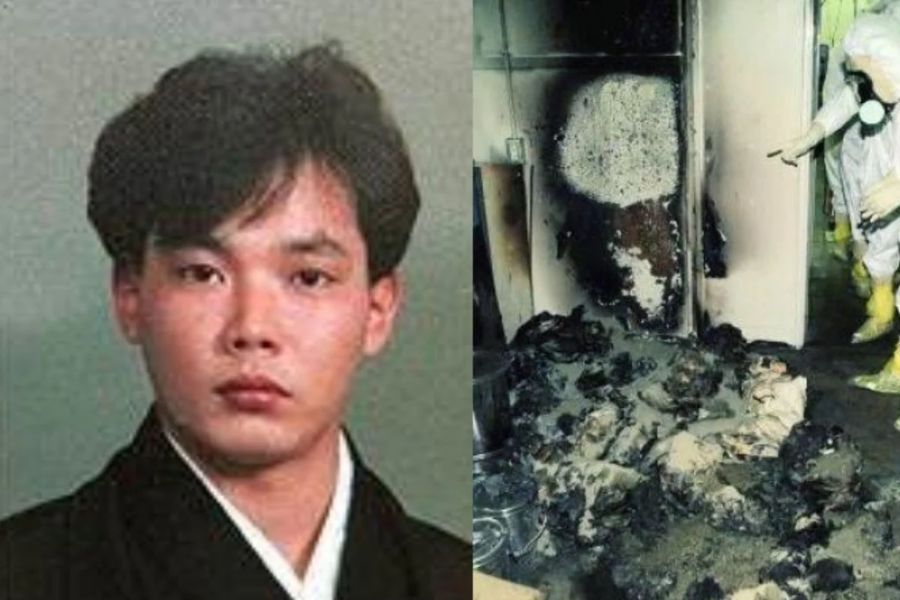What Did Hisashi Ouchi Look Like? A Deep Dive Into The Life Of A Tragic Hero
Hisashi Ouchi's story is one that resonates deeply with many, evoking a mix of sympathy and curiosity. As a victim of one of the worst nuclear accidents in history, he became a symbol of both human vulnerability and resilience. In this article, we will explore not only what Hisashi Ouchi looked like but also delve into the details of his life, the events surrounding the accident, and the aftermath that followed. Through this comprehensive examination, we aim to honor his memory while providing valuable insights into a topic that is often overlooked.
Hisashi Ouchi was a Japanese nuclear worker who suffered severe radiation injuries after a criticality accident at the Tokaimura nuclear facility in Japan on September 30, 1999. This tragic event not only changed the lives of Ouchi and his family but also raised important questions about safety in nuclear facilities. Understanding Ouchi's life and appearance can help us remember the human side of this catastrophic incident.
This article aims to provide a thorough understanding of Hisashi Ouchi, his appearance, and the broader implications of his story. By focusing on aspects such as his early life, the accident, and the medical treatment he received, we hope to present a nuanced view of a man who became a pivotal figure in discussions about nuclear safety and ethics.
Table of Contents
- Biography of Hisashi Ouchi
- What Did Hisashi Ouchi Look Like?
- The Tokaimura Nuclear Accident
- Medical Treatment and Aftermath
- Impact on Nuclear Safety Regulations
- The Legacy of Hisashi Ouchi
- Conclusion
- Sources
Biography of Hisashi Ouchi
Hisashi Ouchi was born in Japan, where he lived a relatively unremarkable life until his involvement in the nuclear industry. He worked at the JCO (Japan Nuclear Fuel Conversion Co.) facility in Tokaimura, where he was responsible for uranium processing. Ouchi's dedication to his job was evident, but it would ultimately lead him into a dangerous situation that would change the course of his life forever.
| Personal Information | Details |
|---|---|
| Name | Hisashi Ouchi |
| Date of Birth | March 3, 1965 |
| Nationality | Japanese |
| Occupation | Nuclear Worker |
| Incident | Tokaimura Nuclear Accident |
| Date of Incident | September 30, 1999 |
| Date of Death | December 21, 1999 |
What Did Hisashi Ouchi Look Like?
While the details of Hisashi Ouchi's life are significant, many people are curious about his physical appearance. Before the accident, Ouchi was an average-looking man in his mid-thirties. He had short black hair, a slender build, and was often seen wearing the standard uniform of a nuclear worker. However, the horrific nature of the accident and the subsequent medical treatments dramatically altered his appearance.
Pre-Accident Appearance
- Short black hair
- Slender build
- Average height
- Often wore work uniforms
Post-Accident Appearance
After the accident, Ouchi's appearance changed drastically due to the severe radiation burns he suffered. He experienced extensive tissue damage and was left with significant scarring. Photographs taken during his hospitalization reveal a man who had lost much of his physical identity, a visual testament to the severity of his injuries. His condition had deteriorated to the point where he was unrecognizable compared to his former self.
The Tokaimura Nuclear Accident
The Tokaimura nuclear accident is a critical part of understanding Hisashi Ouchi's story. On September 30, 1999, a criticality accident occurred when workers at the JCO facility improperly handled uranium fuel. Ouchi was one of the three workers exposed to lethal doses of radiation, resulting in catastrophic injuries. This tragic event serves as a reminder of the potential dangers associated with nuclear energy.
Details of the Accident
The accident occurred due to a series of human errors, including:
- Improper mixing of uranium solutions
- Lack of safety protocols
- Inadequate training for workers
Medical Treatment and Aftermath
After the accident, Hisashi Ouchi was rushed to a hospital where he received intensive medical care. The treatment he received was groundbreaking, but the extent of his injuries made recovery extremely challenging. Medical professionals worked tirelessly to save his life, but the damage caused by radiation exposure was severe.
Challenges in Treatment
Ouchi faced numerous challenges during his treatment, including:
- Severe radiation burns
- Organ failure due to radiation poisoning
- Sepsis and other infections
Impact on Nuclear Safety Regulations
The Tokaimura accident had a profound impact on nuclear safety regulations in Japan and around the world. Following the incident, there was a significant push for stricter safety measures and protocols within the nuclear industry. Ouchi's story became a rallying point for advocates calling for improved safety standards.
The Legacy of Hisashi Ouchi
Hisashi Ouchi's legacy extends beyond his tragic fate. He became a symbol of the risks associated with nuclear energy and the importance of safety regulations. His story continues to serve as a reminder of the human cost of industrial accidents and the need for vigilance in ensuring worker safety.
Conclusion
Hisashi Ouchi's life and the circumstances surrounding the Tokaimura nuclear accident are critical components of understanding the complexities of nuclear energy. Through this exploration of his biography, appearance, and the broader implications of his story, we honor his memory and acknowledge the lessons learned from this tragedy. We invite you to share your thoughts in the comments below or to explore other articles on our site that discuss safety in the nuclear industry and the importance of ethical practices.
Sources
Did Kurt Russell Just Die? Unraveling The Truth Behind The Rumors
Children Of Cheryl Hines: A Comprehensive Look Into Her Family Life
Colin Farrell Girlfriend 2024: Who Is The Actor Dating Now?


